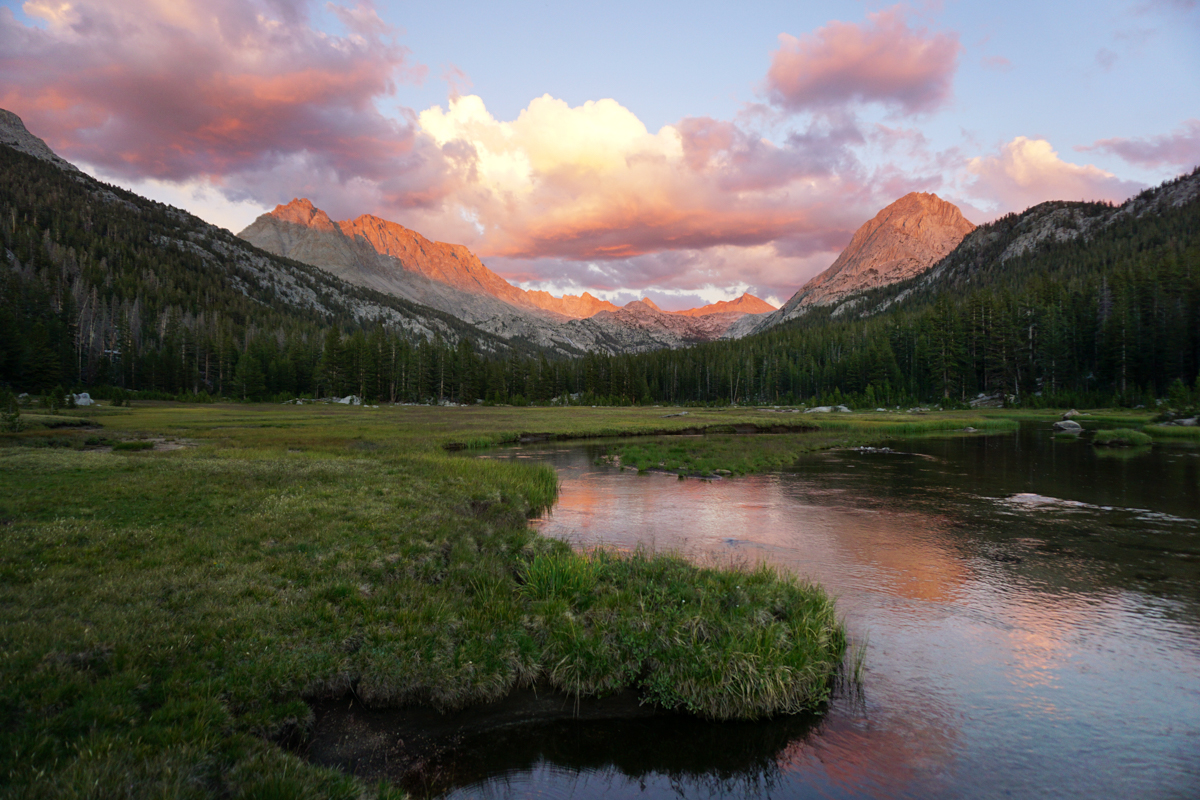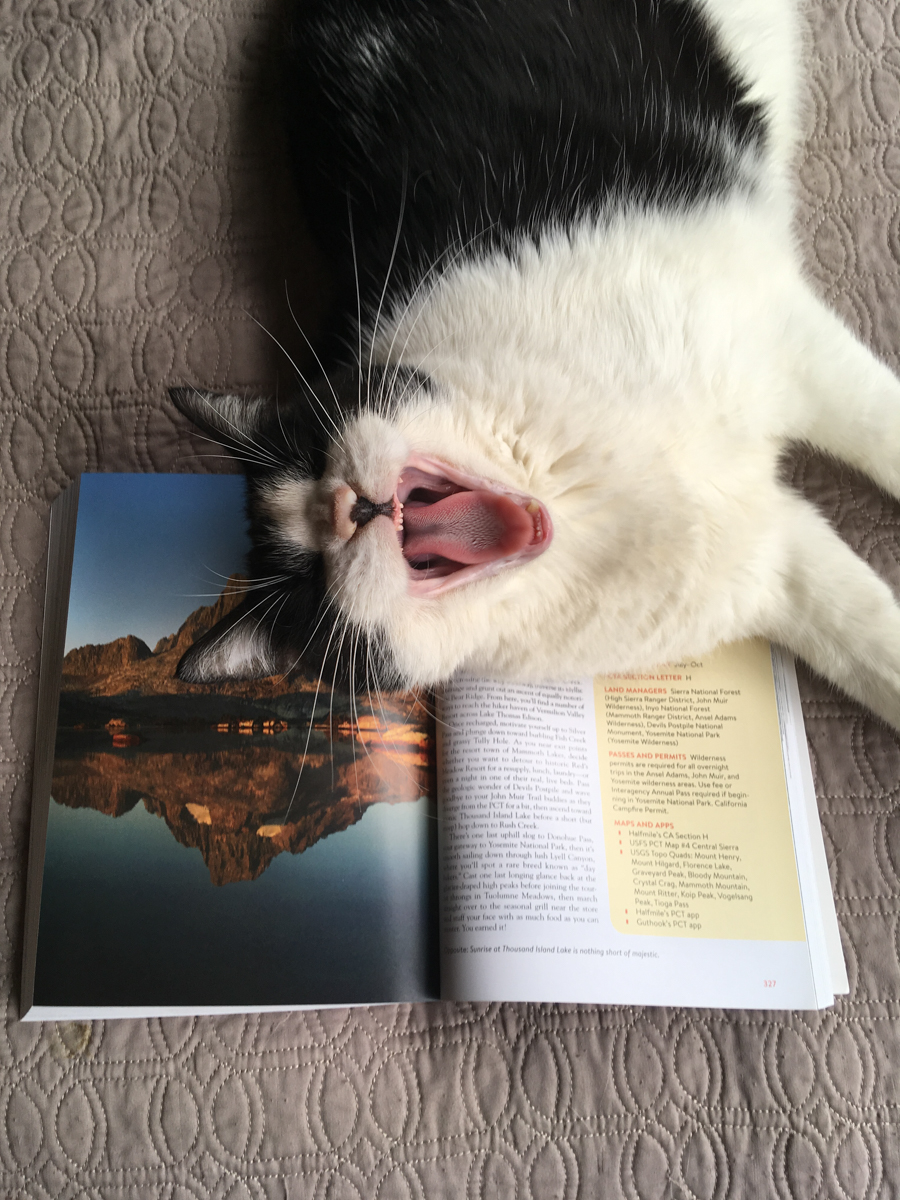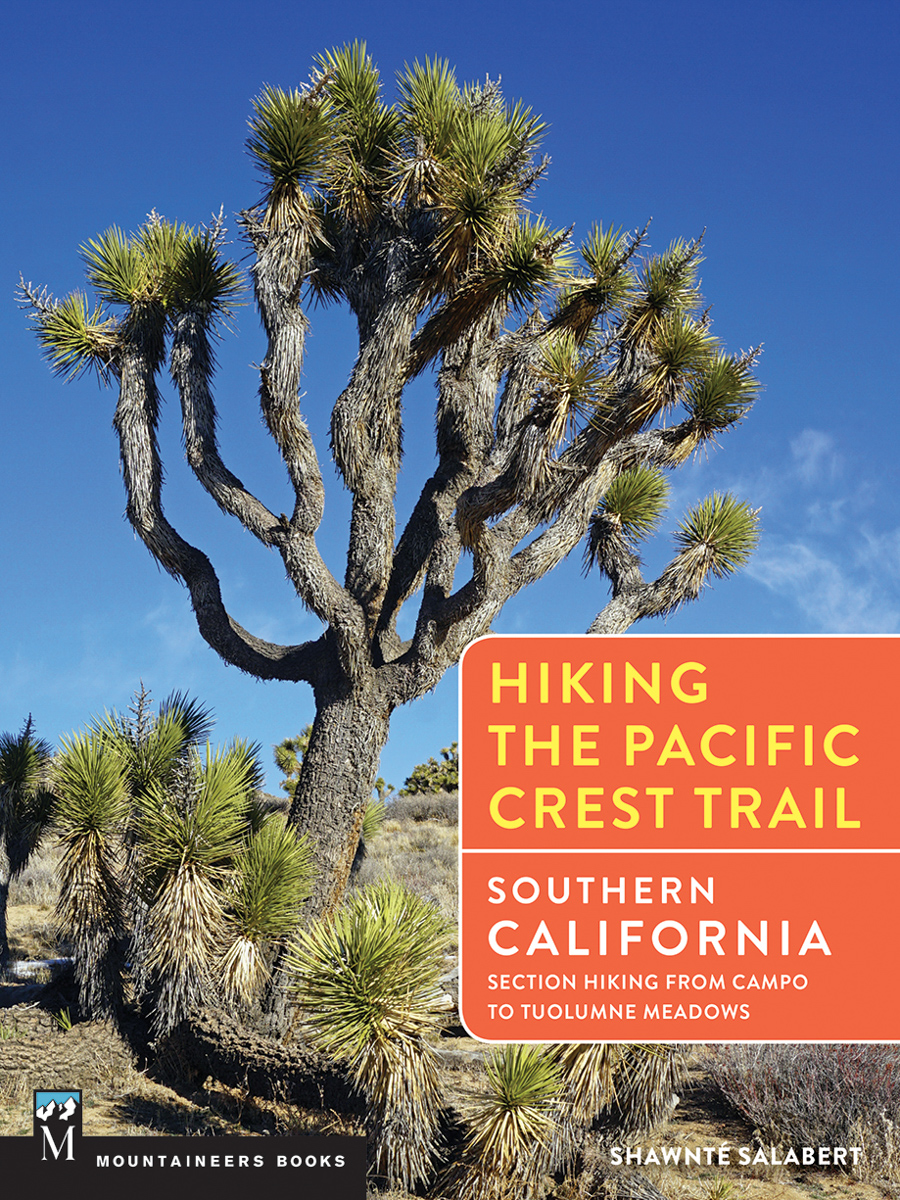Shawnté Salabert: “I am a writer.”

Shawnté Salabert: “I am a writer.”
The author on the book and the hike that changed her path.
By Gale Straub
Shawnté Salabert has always written but her dream was to become a writer.
“I am a ____.” Some words are easier to fill in that gap with than others. Take, for example: “doctor.” Years of schooling lead you to that designation. It carries societal weight. It may or may not be tied up in your identity or your self worth.
Why can it be so hard to say, “I am an artist” or “I am a writer”?
At 39 years old, Shawnté just published her first book and spent her first year working full time as a freelance writer. For her, this life change was born out of an opportunity born out of hard work. Running parallel was a growing love for the mountains of California. Those hills provided the headspace and the certainty to fill in the blanks.
I talked with Shawnté for an hour about her new book, how she came to the mountains, and advice for other writers in the outdoor space.
Interview below condensed for brevity and based on a phone conversation conducted on opposite coasts.

Shawnté at Forester Pass
Meet Shawnté
S: This sucker clocks out at 382 pages. It’s been three years since I started this whole process and two of those years were really doing all of the fieldwork – covering the 942.5 miles plus side trails. It’s a total dream come true to see the physical output of all of that work.
Shawnté still had a full time job working in the music industry when she got a deal to write a guide book about section hiking the southern portion of the Pacific Crest Trail (PCT).
S: A very long time ago I was a music journalist but I moved away from that, first to an indie label and then to music licensing. I wasn’t as interested in music writing anymore, but I started a personal blog which turned into a narrative of my outdoor exploits. Then I ended up writing for Modern Hiker. The editor there, Casey Schreiner, was asked to put in a book proposal about section hiking the southern portion of the PCT. He didn’t have the bandwidth, but he sent along my information to the publisher.
G: Wow.
S: The publisher reached out after about six months and asked me if I’d be interested in writing the book. I was like, is this a prank? Writing a guidebook was never something that occurred to me but I always wanted to write. Ever since I was a kid, I had a vision of having a career as a professional writer. The library was such a getaway for me, I’d sit with the books for hours. I loved getting lost in stories about the world. Books were always an escape.
I spent two weeks crafting a book proposal and writing up some samples. We settled the deal terms. It’s launched me into a new life in many ways.
G: And that was three years ago?
S: Yes.
S: Working a full time job and trying to write about a nearly 1,000 mile trail was a crazy undertaking. At first I tried to bite it off in weekend trips, but it quickly dawned on me that I would never finish the book that way. I approached my boss, who was incredibly supportive, and asked him if I could take a sabbatical that first summer and get lost in the Sierras. And those two months changed the course of my life completely. I was out there working with a purpose but I was also having a grand personal transformation, which was wild. I didn’t expect to be sitting in the middle of King Canyon National Park tucked deep in the backcountry and having this revelation that I was going to quit my job when I got back.
I didn’t expect to be sitting in the middle of King Canyon National Park tucked deep in the backcountry and having this revelation that I was going to quit my job when I got back.
G: And is that what happened?
S: Yes, I was out there camping by myself one night. I was sitting reflecting on this crazy experience and opportunity. Since I was a kid, I wanted to write but there was a part of me that never felt legitimate. I never felt like a “real” writer. Why would anyone want to read what I had to say? I had left that dream by the wayside. I figured it was really impractical, there’s no way you can make a living with this. I thought it was foolish to pursue this dream. But I was out there and I realized, I’m living this dream right now. This is the opportunity you have. I don’t have kids, I don’t own a home. If I’m going to take a big risk, now is the time.

G: Why didn’t you think that other people would want to read what you had to write?
S: I think it’s one of those imposter syndromes that a lot of us have in creative professions. With writing, I’m an avid reader and I admire different authors. I was comparing myself to other people: I could never do what they do. There was a lot of that self doubt that kept me from pursuing this life long dream.
It was bizarre to get out there in the wilderness. When you’re out there, you’re stripped of everything in a really good way. You’re out there with what you have on your back and what you have in your head and in your heart and in your soul. You have a lot of time, if you choose to use it that way, to sort through all of that stuff. That’s what I did. I finally looked at myself and the artificial parameters I was setting up. I realized none of that matters. I realized that I’m going to write no matter whether someone pays me to write. But to take the opportunity to see if I can tell stories that haven’t been told or if others want to read them. It’s a gift to be able to do that. Now is the time to see if I can.
G: In the book, will people get to read words that you wrote out there on the trail?
S: The book is a mix. It’s a guide book of sorts but there are personal anecdotes as well. I have written a lot about my experience on the trail outside of the book. If [the publisher] had just wanted a straight guidebook I think I would have said no. I enjoy guiding people in the outdoors, but as a writer it’s not necessarily what I aim to write about. But this is written in my voice, it’s saying “hey Gale, want to go on a hike?”
I also got to include people I met out there on the trail. I met a life long friend on a section of the Sierra section of the PCT. It’s not just a guidebook, it’s a documentation of that time in my life.

Shawnté volunteering with the Pacific Crest Trail Association – Trail Gorillas
G: Is there a particular section of the PCT that you hold dear?
S: I could take the easy way out and say the High Sierras. But probably the most exciting thing for me was discovering how much I love some of the more forgotten parts of Southern California. Thru hikers are in it for the long haul, there are days that just suck: it’s hot, it’s dry. You might go 25 miles without water. The scenery can become monotonous. But I loved hiking in those places where people don’t normally hike outside of the “PCT season.” There’s a lot of beauty in southern California that gets overlooked. I was on the trail in all times of the year and most times there were zero people out there. You see the effects of geology and the effects of fire and the effects of humans and the absence of humans. I’ve lived in LA for 11 years so to form a more intimate relationship with the landscape was incredible.
G: Do you hope that people who read the book, whether or not they choose to section hike the PCT, get to know the area closer to them better?
S: Yeah, one of the cool things I get to do is go on a book tour of sorts and talk about it. One of the things I plan to do is talk about what makes their area so special and highlight some of the places they may not know to go. I’m hoping that even if they don’t come to the book tour, they’ll read about and see the images in the book and want to go see for themselves. There’s a lot of magic here. If you want people to be invested in protecting these places they need to feel a personal connection or at least an intrigue or an interest in the land. I want places that aren’t as beloved to get some love!
G: What I love hearing as I listen to you speak is that I’m imagining you as a little girl…I imagine you reading and it was your escape, and now you’ve created something that is a key for others to escape in California.
S: Growing up in inner-city Milwaukee, we didn’t have a lot of money. We didn’t even have a car to get around so we walked everywhere. But we had a Boy’s and Girl’s club across the street and they had a summer camp outside the city and that’s how I first experienced the outdoors. I got to go there when I was eight years old and I thought, “What is this place? The trees, the lake, the quietude. There’s no graffiti, there’s no violence, there’s none of that.” It became a very important part of my life.
But I also explored the city with my mom. We’d leave the house and when we got to a corner, she’d say, “left, right, or straight?” and I got to chart our course.
It’s kind of cool to think that I may have the opportunity to open the door of curiosity for someone else.

G: And you said you didn’t own your first pair of hiking boots until your 20’s. What made you buy that pair?
S: I never really had a lot of gear. I think I got away with that hiking the non-technical terrain of the midwest or New York. When I moved to Los Angeles, I discovered mountains and they captivated me. I got it in my head that I wanted to hike Mount Whitney. Mind you, I was hiking in jeans and New Balance shoes. I had an experience hiking in the Santa Monica Mountains and I slipped. When I fell, I almost landed on a juvenile rattlesnake. So I thought, maybe it’s time to get hiking boots.
G: Was Mount Whitney your first backpacking trip?
S: No, actually. One of my first friends in LA and I bonded over a curiosity for the mountains. We had both owned Ed Viestur’s “No Shortcuts to the Top” (which is still my personal guide, his philosophy is getting to the top is optional, getting down is mandatory). We realize we have this book in common and so we plan out a couple of backpacking trips. I was so unprepared for those trips leading up to Mount Whitney. I learned a lot of lessons that summer. But when I summited Whitney, that sealed the deal for me.
G: And that’s when you started writing more?
S: This was 8-9 years ago. I started writing for Modern Hiker around 4 years ago. But we kept a blog called “What Would Ed Do?” after Ed Viesturs. *laughs*
G: So, at this point, you’ve been writing freelance for several years, you have a ‘real’ book that is being published. Would you self identify as a writer?
S: *Pause* Yeah, I made the decision last year. I came back at the tail end of that sabbatical and I had one week left. I sat down with my boss and told him I had some news for him: that I’d work part time for a year. And now this is my first year full time freelancing for the entire year. This is the first time I’ve truly felt comfortable calling myself a writer and not having to add some sort of caveat. We say those things so we don’t seem too proud or full of ourselves, but you know what? I’m a writer. I’ve had the opportunities to write for some dream publications this year, which I would have never considered happening. I work my ass off every single day. I’m pitching, I’m interviewing people, I’m writing, I’m listening to stories, I’m trying to learn more about my craft. I write every day. It’s a gift: this book opens that door for me in a way that I don’t know I would have opened myself.
This is the first time I’ve truly felt comfortable calling myself a writer and not having to add some sort of caveat. We say those things so we don’t seem too proud or full of ourselves, but you know what? I’m a writer.
G: Do you have any advice for other women who want to pursue a career in adventure writing? From what I’m hearing, it’s a lot of work and you need to do the work.
S: The great thing about living in the modern era is the there are a lot of online writing groups. I strongly recommend that you befriend other writers so you can learn about the craft through them and learn about the business side of writing through them, if you want to do this as a business. If you want to write for creative expression, just get out there and write. You need to write. But if you want to make a living (which is nearly impossible these days) you do have to hustle. I’ve taken classes that look at sentence structure and article structure. I’ve taken workshops through journalism groups. I’ve taken classes that teach you how to pitch. I’ve developed mentors who are also writers and editors who have helped me greatly.

Eddie Cat Halen on Shawnté’s new book!
Writing is funny. It can be a very lonely thing. I’m sitting here in my apartment and my cat is snoring over there. This is how my days are unless I’m out in the field or attending an event, but there is a community out there. You have to figure out how you want to tap into that community.
It is very hard to be a writer and be an island. It is a much fuller experience if you can tap into other creative folks. I have a friend who is an entertainment writer and we co-work. She understands the drudgery of pitching and deadlines. We can share the lived experience of being a working writer.
Ultimately, that old maxim about writing what you know is true but it doesn’t have to limit you. If there’s something you don’t know but you’re interested in, go out and explore it. If writing is in your soul, life will trigger reasons for you to write. It will come. You just have to let it be. You don’t want to close the door like I did on myself so many years ago.
Ultimately, that old maxim about writing what you know is true but it doesn’t have to limit you. If there’s something you don’t know but you’re interested in, go out and explore it…You don’t want to close the door like I did on myself so many years ago.
G: I feel so cliché bring up writer’s block, but I’m going to do it anyway. How do you, especially when you write for a living, deal with the days where you really don’t want to write?
S: Oh, it’s true. If you write for a living, you can’t let writer’s block stop you. There are a couple of different things I do to deal with it. First, I get in the shower. I don’t know what it is about being in the shower, but I get so many ideas there.
If I really hit a wall, I’ll go out for a hike. I live really close to Griffith Park in Los Angeles, and I’ll do a quick 3 mile hike. There’s something about breathing the air and feeling the sun or feeling the mist in the morning… I saw a bobcat the other morning and that got me jazzed. It made me want to write.
Also, reading helps. Reading other people’s thought provoking writing. They always say, to be a good writer, you need to read a lot. I often get so inspired by reading something beautiful that someone else wrote. It’ll give me the chills and sets my mind in that good place.
G: Shawnté, I knew I was going wish that I’d recorded this for the podcast.
S: Oh, one day, one day!
One day, indeed. You can find Shawnté’s new book, Hiking the Pacific Crest Trail: Southern California: Section Hiking Campo to Toulumne Meadows here.
Learn more about Shawnte via her portfolio site.
Note: This interview contains amazon affiliate links. If you make a purchase through the link, we receive a small commission at no charge to you. Thanks for your support of She Explores!

Be the first to comment